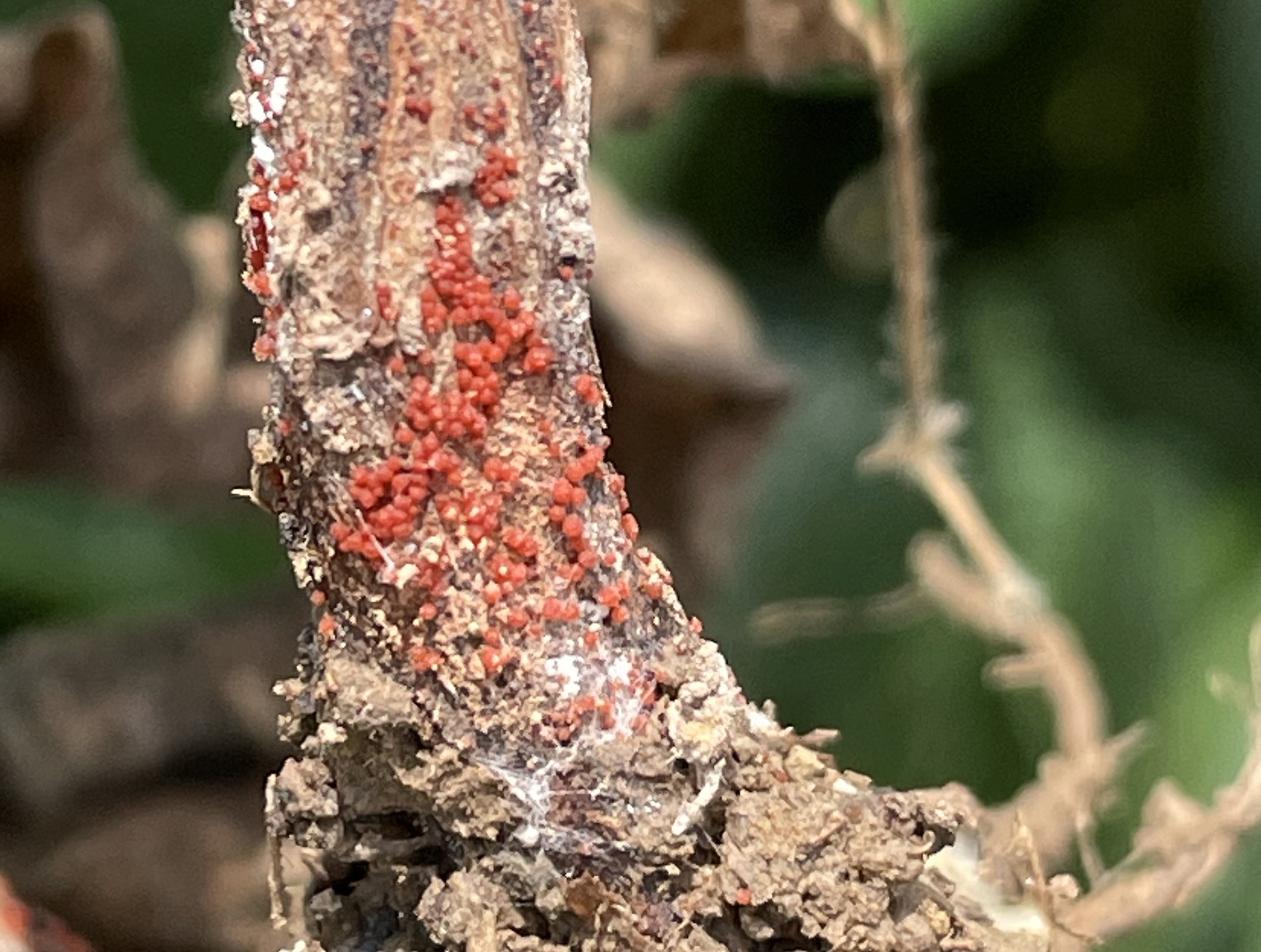First case of red crown rot, yield-robbing soybean disease, confirmed in Missouri in Marion County

COLUMBIA, Mo. — University of Missouri Extension state plant pathologist Mandy Bish reports confirmaion of red crown rot, a yield-robbing soybean disease, in Marion County in northeastern Missouri.
This is the first confirmed incidence of the disease in the state. Bish says MU Extension specialists have been scouting for the pathogen since its confirmation in Illinois in 2018.
Yield losses from red crown rot can be significant, with estimates ranging from 15 to 70 percent in affected areas of a field.
The fungus survives the winter in plant residue, prefers warm and wet conditions for growth and can infect soybean roots shortly after planting. Symptoms begin to appear later in the season, usually when soybean plants enter the reproductive stage, says Bish.
Leaves of infected plants can have symptoms that resemble sudden death syndrome. Yellow spots become visible on upper canopy leaves and can progress into yellow and brown spots that grow between leaf veins. Wilting and death can follow in severely infected plants.
Additional symptoms of red crown rot include reddish discoloration at the base of the stem and root near the soil line. White fungal growth (mycelia) may be visible on the roots along with red spheres (perithecia). These structures allow the fungus to grow and reproduce.
Disease typically occurs in nonuniform patches within fields. When scouting, look for groups of infected plants in wet or low-lying parts of the field. You will need to pull up plants and look at the roots to distinguish red crown rot from sudden death syndrome, says Bish. Splitting the stem open can help distinguish red crown rot from other lookalike diseases, including brown stem rot.
Currently, no commercial soybean varieties are marketed with resistance to red crown rot. The fungus is in the soil, so over-the-top fungicide applications will not be effective, says Bish.
Containing the disease requires minimizing disease spread and reducing the amount of pathogen in the soil. Crop rotation to a non-host crop like corn for two years and reducing the spread of the disease by machinery can help. Fungicide seed treatments that are labeled for red crown rot may help protect against early-season infections.
Red crown rot was first confirmed in soybean crops in the southern U.S. in the 1970s and has now been confirmed in 11 soybean-producing states, including Missouri.
Contact the MU Plant Diagnostic Clinic at http://muext.us/PlantClinic to help with diagnosis of the disease.
Bish discusses red crown rot in northeastern Missouri in a short YouTube video at https://www.youtube.com/shorts/NP3i8SAh7QUhttps://www.youtube.com/shorts/NP3i8SAh7QU.
Miss Clipping Out Stories to Save for Later?
Click the Purchase Story button below to order a print of this story. We will print it for you on matte photo paper to keep forever.

